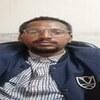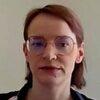Explore all the information on
Poultry egg quality
Egg quality defines those characteristics of an egg that affect consumer acceptability and preference. Components of quality include shell quality and interior egg quality for shell eggs, and interior egg quality for further processed eggs. The quality of the egg once it is laid cannot be improved. Hence, its maintenance is mostly a preventive process. Egg quality is influenced by several factors including rearing, temperature, humidity, handling, storage, and egg age. Shell quality: There are five major classes of shell defects: integrity, texture, shape, color, and cleanliness. Internal egg quality involves functional, aesthetic and microbiological properties of the egg yolk and albumen. The proportions of components for fresh egg are 32% yolk, 58% albumen and 10% shell. Regarding exterior egg quality, the shell of each egg should be smooth, clean and free of cracks. The eggs should be uniform in colour, size and shape.
1. Introduction Gut microbiota, represented by bacteria, archaea, viruses, and eukaryotes, take part in regulating several functions in both humans and animals [1]. It has been estimated that the chicken gut can be colonized by at least 1000 different microbial strains that are involved in maintaining the intestinal health of hens while sustaining productivity and growth [2,3]. This microbiota takes part in various metabolic pathways related to nutrient digestion and absorption,...
Comments : 0
Recommendations: 2
1. Introduction The increase in food demand driven by population growth, coupled with the reduction in the supply of raw materials owing to factors such as climate change, poses a significant challenge for the agricultural and livestock sectors. Among the different processes associated with egg production, the feeding of hens represents the largest source of environmental impact [1]. Nonetheless, the revaluation of agrifood by-products through their incorporation into animal diets...
Comments : 0
Recommendations: 0
.jpg&w=3840&q=75)

Effects of superdoses of phytase on peaking Hy-Line W-36 laying hen egg production and egg quality
Suggested link
The 2022–2023 highly pathogenic avian influenza (HPAI) H5N1 outbreak in the United States (U.S.) is the most geographically extensive and costly animal health event in U.S. history. In 2022 alone, over 57 million commercial and backyard poultry in 47 U.S. states were affected. Over 75% of the affected poultry were part of the commercial table egg production sector. Methods: We conducted a case–control study to identify potential risk factors for the introduction of the HPAI virus...
Comments : 0
Recommendations: 0
In this interview, Carlos de la Cruz, Global Consultant Expert at Evonik, discusses the critical challenges faced by the egg industry in providing optimal nutrition for laying hens. He highlights issues such as shortage of protein sources and the importance of balanced diets. Carlos also shares successful...
Comments : 0
Recommendations: 4
INTRODUCTION The initial stage of a laying hen's life is crucial for its development. During this period, optimal nutrition is essential for ensuring strong performance and high egg quality throughout the hen's productive lifespan (Rentsch et al., 2023). During this phase, young laying hens undergo significant physiological changes, including the development of reproductive organs and the initiation of egg production. Adequate nutrition during this period is crucial for...
Comments : 0
Recommendations: 1
The demand for functional foods has surged in recent decades and is projected to continue growing due to their potential to mitigate the risk of certain diseases. Eggs, recognized for their excellent nutritional value and health benefits, fall into this category. The widespread production and consumption...
Comments : 0
Recommendations: 1
The WVEPAH training program is designed for veterinarians and poultry professionals who wish to consolidate and refine their knowledge in areas such as pathology, nutrition, biosecurity, and epidemiology, among others. We are pleased to announce our upcoming course:
Module II: Commercial Layers at the prestigious Universidad Nacional...
Comments : 0
Recommendations: 2
Rick Kleyn (Consultant at Spesfeed) talks about egg size, quality, and protein levels in the diet, in this Engormix interview....
Comments : 0
Recommendations: 2
I. INTRODUCTION The inclusion of alternative ingredients such as rice bran, DDGs and sunflower meal in layer diets, to reduce feed cost, can result in higher phytate levels, potentially limiting availability of minerals, protein and energy, all of which are important to maintain egg production, eggshell strength and bone strength (Bello and Korver, 2019). Phytase enzymes are commonly used in the animal feed industry primarily to increase phosphorus (P) availability from plant...
Comments : 0
Recommendations: 0
...
Comments : 0
Recommendations: 0
In recent years, the egg industry is aiming to prolong the life cycle of laying hens, both for reasons of profitability and for sustainability. However, the goal to produce 500 eggs in a 100-week cycle is hindered by the declining performance of older hens. It is hypothesised that nutritional strategies can be implemented to support the health of these animals, thereby improving laying persistency. The objective of this trial was to investigate the effects of two sources of butyrate...
Comments : 0
Recommendations: 0
The Australian Egg Industry has identified opportunities to optimise production performance, health, flock consistency and egg quality through best practice. Using a cross-sectional survey design for 3 stakeholder groups (farm staff, managers, and consultants), we assessed current knowledge, attitudes, practices, barriers and enablers of adoption of best practices in poultry welfare, health, biosecurity and production performance. Of the 61 manager surveys posted, 27 were returned; of...
Comments : 0
Recommendations: 0
.jpg&w=3840&q=75)

(Mandarin) Strengthening Pellets for Better Feed Performance
Suggested link
Steve Leeson (Professor Emeritus, University of Guelph) comments on the use of amino acids in broiler nutrition and the performance of low energy diets, in this Engormix interview....
Comments : 0
Recommendations: 4
I. INTRODUCTION Phytogenic products are used as an antibiotic alternative, with other alternatives like prebiotics, probiotics, organic acids and other products with antimicrobial properties. The ability of phytogens to reduce the load of significant pathogens such as Clostridium (2020), Escherichia (Zou et al., 2016), and Salmonella (Abudabos et al., 2016), and improve the health and performance of chickens makes them increasingly popular. Phytogens also improve critical layer...
Comments : 0
Recommendations: 0
Early warning systems and decision-making tools have the potential to forecast and simulate egg production losses, allowing producers to implement corrective actions pre-emptively. The aim of this study was to create an egg loss forecasting model for free-range egg producers. Commercial farm records comprising of 281 Australian free-range flocks dating from January 2010 until November 2021 were used. Flocks were located in 4 states, with sizes ranging from 10,000 - 40,000 laying hens....
Comments : 0
Recommendations: 0
by Lyndsey Johnston
Insects and derived products are possible alternative feedstuffs to improve the sustainability of the livestock sector due to several promising attributes such as limited space requirements for growing larvae, short productive cycles, limited water needs and the suitability of some species to mass rearing. Also, some insect species can contribute to circular economy models by upcycling organic side-streams from other industries into high-value...
Comments : 1
Recommendations: 0
In the past, nutritionists did not pay attention to fibre in poultry feed formulations. Step by step the researcher as well as the industry in this decade has realised the importance of fibre in a poultry feeding strategy. The use of fibre in poultry has been, and still is, a major research topic at universities around the globe. Professor Mateos group from Spain as well as Prof. Svihus from Norway did a lot of research to explore the effect of different fibre sources on poultry health...
Comments : 4
Recommendations: 7
INTRODUCTION Natural medicinal products originating from herbs and spices have been used as feed additives for poultry (Guo et al., 2004). Compared with synthetic antibiotics or inorganic chemicals, these plant-derived products have proven to be natural, less toxic, residue-free, and are thought to be ideal feed additives in feeds for animal production (Wang et al., 1998). Any attempt to improve poultry production and increase its efficiency, therefore, needs to focus on the...
Comments : 0
Recommendations: 0
.jpg&w=3840&q=75)

Effects of superdoses of phytase on peaking Hy-Line W-36 laying hen egg production and egg quality
Suggested link
High stocking density and environmental factors such as acute heat stress, health challenges, bacterial or viral exposure, and mycotoxin-contaminated diets may cause serious stress of laying in modern intensive egg production systems. Laying hens under immunological stress are susceptible to pathogen infection due to an imbalance in immune response and cecal microbiota. Laying hens that are raised under the conditions of intensive farming and high stocking densities are exposed to...
Comments : 1
Recommendations: 1






.jpg&w=3840&q=75)

.jpg&w=3840&q=75)






.jpg&w=3840&q=75)




.jpg&w=3840&q=75)











